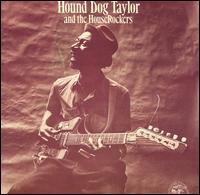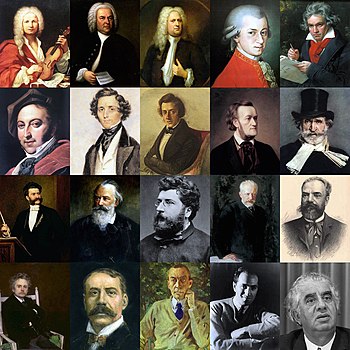 |
| Miles Davis 1984 in Bad Segeberg (Photo credit: Wikipedia) |
It is an illusion brought about by the record store racks that discrete stylistic barriers separate the music we love into camps of the genre. Every music is a bastard at heart. While the contemporary apparatus for the consumption of music reinforces the notion of the genre (notable exception: the internet), with Top 40 radio stations, hip-hop magazines, and the segmented organization of the Grammys, listeners realize deep down that all this division is a lot of baloney. Music is music.
Yet, despite the intuitive understanding that the theory of genre doesn't stand up under scrutiny, it remains a powerful principle in our culture (or more accurately, our culture industry). Not only do genres define the radio station to which you tune in and instruct you what clubs to avoid on a Friday night, the genre is deeply interwoven with people's identities. High schools are the perfect laboratory for music-based social identity. The goths all seance together to the accompaniment of Manson and Ministry; Preppy kids rock the Dave Matthews while driving around in their parents' Hummers; skaters thrash to punk rock; and the weirdos gather around old jazz records, analyzing the theoretical arcana of the style and deciphering the liner notes as if they are gnomic texts. In short, the idea of genre, as much as we like to hate it, is a potent social and musical force in our culture.
But just as every individual understands that genre is a fluid concept, musicians are even more acutely aware of this fact. With very few exceptions globally, there isn't music out there that hasn't stolen ideas from other musical cultures around it. Purity simply doesn't exist, since every style is the result of a long and often contentious dialog between people, places, times, and cultures. Every genre, therefore, is the document of some deep dialectic process that continues to morph even as you look at it; every music is a Proteus of possibilities.
This is all a long-winded way of winding up to the topic at hand, the state of modern jazz. Like everything else, jazz came about through a very American sort of mixture: Delta blues met with Sousa marching bands; Debussy encountered Negro spirituals; hymn tunes and Creole culture collided. Perhaps it is no surprise then that a slew of modern jazz musicians is turning to another genre, rock, to find inspiration. Jazz, since its humble inception and by its very nature, borrows.
This is not the first time jazz has succumbed to the Siren's lure of electric guitar feedback and throbbing backbeats. Miles Davis, Chick Corea, Joe Zawinul, and a huge cast of early 1970s musicians incorporated these new sounds into their music, and the purists, predictably enough, wailed that "jazz is dead." Those guys were grabbing new sounds that they heard around them in an attempt to inject a little body and soul into a music that had gone a bit limp creatively at the time. The rock music entering jazz today, though, is of a different origin. To young jazzers today, the distorted guitar is not a fresh new sound at all - it is the sound they grew up listening to. I don't know a soul who spent their formative years of 13 to 18 listening to Miles and Shorter to the exclusion of Mudhoney and Soundgarden. To young Americans, rock (and hip-hop) is in our blood, and jazz is a transfusion we got later in life.
 |
| Brad Mehldau (Photo credit: Wikipedia) |
Another point to mention: just as the erudite narrator in Kazantzakis's masterpiece envies Zorba's earthy, intuitive ways, so do the scholarly pursuits look upon the non-scholarly as a sort of pre-lapsarian Utopia of unmediated reality. The narrator questions his library of books just as a jazzer questions his arsenal of dense music theory. What is it about the intellectual character that looks longingly at the illiterate? I have a hunch that the ideal notion of purity has something to do with it, but more on this idea in another post perhaps; for now, let's return to the topic.
The generational shift and its mark on jazz aesthetics are becoming plain as day. Three recent records exemplify this shifting, more rocking self-identification. I don't want to labor them too extensively, so here's a brief description of a few rocking jazz picks from the last couple years:
The Bad Plus, Prog (2006)
This is piano trio music that strives for the sound of a power trio. I admit that I was a little skeptical when I heard that a "jazz" group covered "Smells Like Teen Spirit," but the Bad Plus's approach to hallowed standards of the rock world, from Queen to Black Sabbath to Bjork, is incredibly fresh. The pianist Ethan Iverson is classically trained and didn't start playing jazz until comparatively recently, and it shows (for the better): rather than playing all the standard jazz piano vocabulary, Iverson takes a neotonal, melodic approach to improvisation. It's as if Rachmaninoff sat down with a rhythm section. Stand-out songs on this most-recent collection include a crashing take on Rush's anthemic "Tom Sawyer," complete with Neil Peart's machine gun drum solo replicated in perfect detail. The original tune "Physical Cities" features a two minute long stop-and-go rhythmic interlude with completely irregular hits. It is probably the most baroque, complex passage I've heard on a jazz record in years.
Brad Mehldau Trio, Day is Done (2005)
Another piano trio album by the indefatigable Brad Mehldau, Day is Done is much more of a traditional jazz album than Prog; heads lead to solos and all the formal architecture of the style is there. However, the material is all over the map, from the Beatles to Nick Drake and Radiohead. The opening cut says it all: with a rattling menace in the drums and thick, gloopy double-stops on the bass, Radiohead's "Knives Out" signifies from the get-go that this isn't cocktail jazz. Mehldau has cultivated a uniquely idiosyncratic voice on the piano and has mastered the technique of playing counterpoint to himself. On Day is Done, one hand is playing jazz while the other is pounding power chords and flipping off the establishment. It's a tour de force of the nascent jazz aesthetic, at once fiercely urgent and sublimely graceful.
Ben Allison, Little Things Run the World (2008)
One of the young leaders of the downtown NY scene, bassist and composer Ben Allison has never been a slave to the genre. His previous albums blend psychedelia, avant-garde, and even Malian griot to create a totally idiosyncratic sound. On his most recent record from two weeks ago (with the band "Man-Sized Safe," named after Dick Cheney's sinister office safe that can fit a man in it), Allison dives into more rocking territory with a 4-piece ensemble complete with an overdriven electric guitar. The grooves are austere and stripped to the bare essentials of pulse, and the melodies are broach and spacious. It's a beautiful record, complete with Allison's signature Avant-jazz weirdness but toned down and kept simple.
These are just a few records that spring to mind that define this newly developing identity of jazz (and of jazz musicians). The Ben Darwish Trio similarly occupies the space between rock and jazz, free-style improv and tight song forms, hip-hop groove, and esoteric textures. From the perspective of a musician who has been playing and listening to the new jazz for years now, therefore, I can say that this sort of thing comes much more naturally than "Autumn Leaves" and "Solar." Rock is what young Americans grew up listening to, and the fact that jazz has been borrowing from it so heavily lately is a testament to the resilience and relevance of the style in 2008.
For a great counter-example, see Sascha Frere-Jones's recent piece in the New Yorker, "A Paler Shade of White." Frere-Jones contends that contemporary indie rock ignores what earlier rock valued so much: musical miscegenation. Not borrowing from black music has created a sterile, rhythmically bland, "white" genre that appeals to - surprise! - white youth. It's a fascinating warning of what can become of music if it gets too pure. Of course, great jazz artists have always known this.
|













